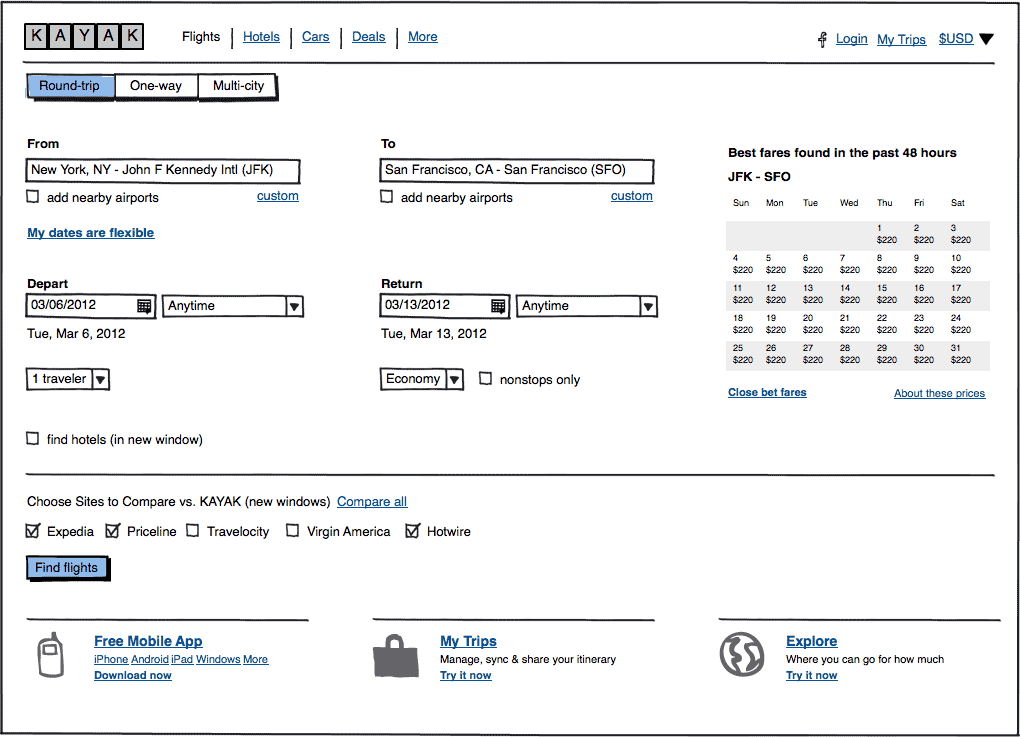Have I got a treat for you! Today you’ll learn how to hack The NASA! Okay, not really. Coding is not about hacking and in Part 1, I promised to make you a super hero, remember?
Part 1 also talked about asking why, Today we’re going to learn about mocking – or wire framing.
Choosing an app that doesn’t hate you
There are tons of apps out there. Just google 20 best wireframe tools. A lot of them are online, collaborative tools, while some are download-and-installable. All of them say they’re gonna empower you to make quick, accurate sketches of desktop apps, websites or mobile apps. One of them, however, distinguishes itself from the bunch by their why:
Helping rid the world of bad software
Personally, I fell in love with Balsamiq Mockups four years ago, when I started working for my current employer. I was hired as a web developer, and my focus was their next big web app that would run anywhere, on any device. Scalable, sleek, futuristic, yeah. I stumbled upon balsamiq, and liked it immediately. And they have a cute logo:
Trying to be as ugly as possible
I told my brothers, Dan and Benjamin, that wireframing tools kind of balance between pretending-that-I-am-a-photoshop-clone and quick-and-simple. However, along that road many tools end up trying to be as-ugly-as-possible-because-simple-is-ugly-or-something.
Wireframing tools are not supposed to be a replacement for the design process. Come on! We have great design tools out there. On the other hand, if they become too basic, they also tend to become be super ugly and hard to use. I’ve seen a few.
Is Balsamiq the best? Yeah, definitely. Okay, maybe not – I haven’t objectively dissected every tool. But I’ve seen a few tools and I’ve tried using some of them. I even did today! I went on a hunting trip across the web, trying to find a great tool with a free community license. I finally ended up sending an e-mail to Balsamiq’s CEO Giacomo “Peldi” Guilizzoni, asking if I could get a few licenses for this teaching project.
I got a sweet reply from their Head Chef of the Wow! Division, Valerie Liberty where she told me it was her pleasure to give me three licenses to the “Pedersen Brothers”. Little did I know that they have actually given away more than 10 000 licenses up through the years.
Remember how we talked about the reason for existing in part 1? Balsamiq is all about that.
Golden links
It’s getting late, and I have not even started talking about UX and wireframing! For now, I’ll leave you with some links I found on Balsamiq’s website. Enjoy and see you in part 3, where we’ll start digging into wireframing with Balsamiq!
Balsamiq Success Stories – a free book on nine people’s experience of how Balsamiq helped them and how it didn’t help them
Little Big Details – a curated collection of the finer details of design, updated every day.
Inspire UX – a blog that posts articles and quotes relating to User Experience Design (UX)
Learn Balsamiq through the UX Apprentice.



